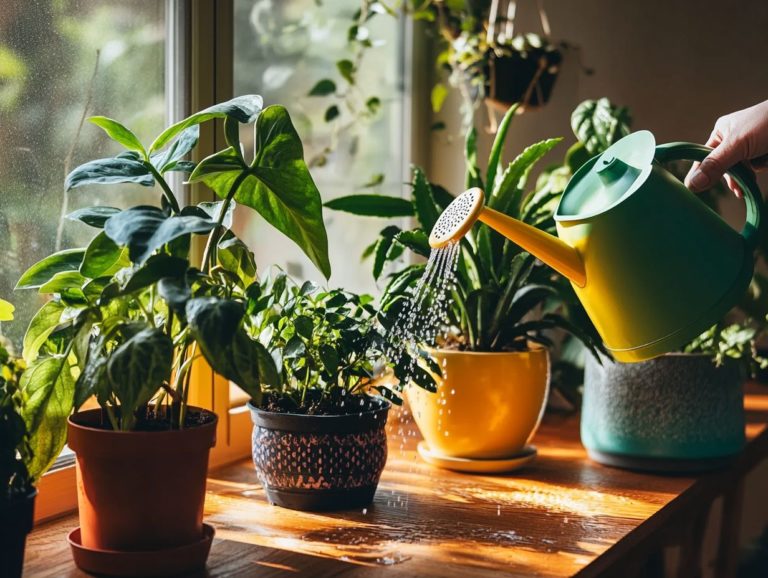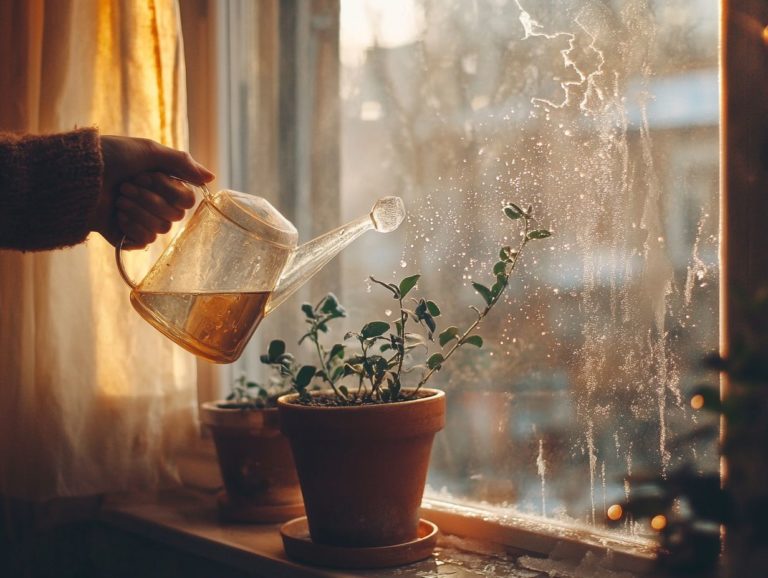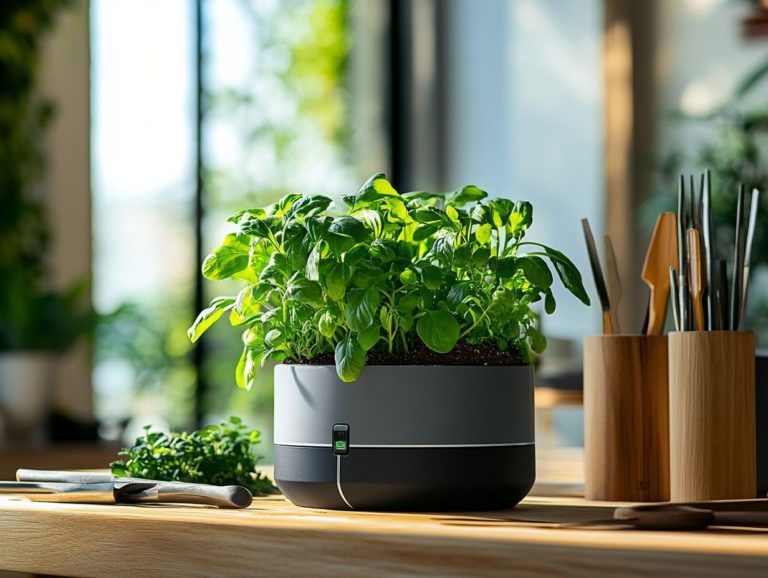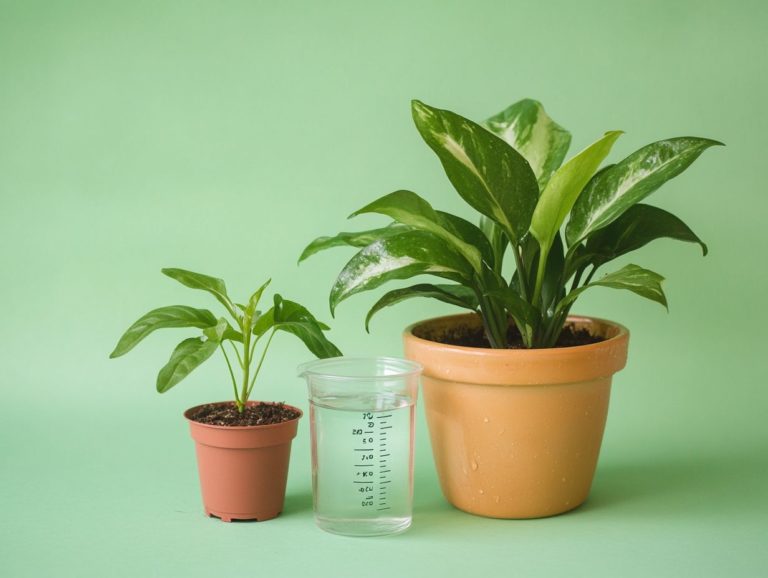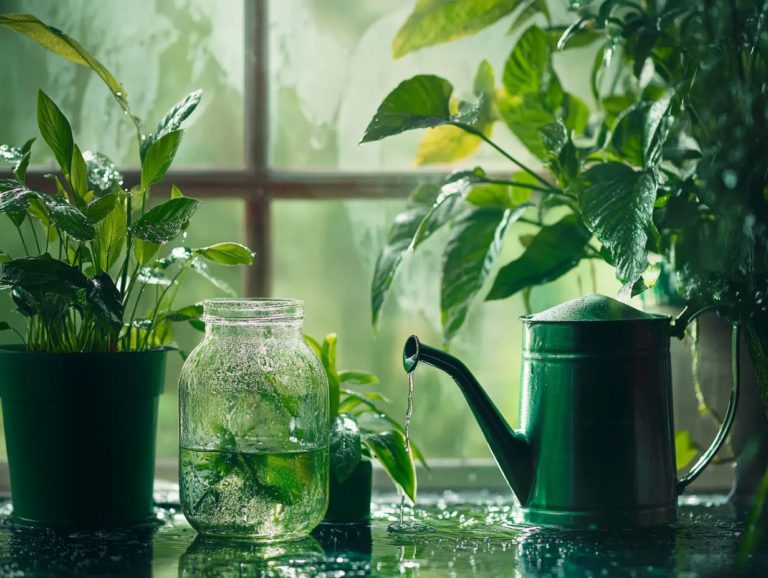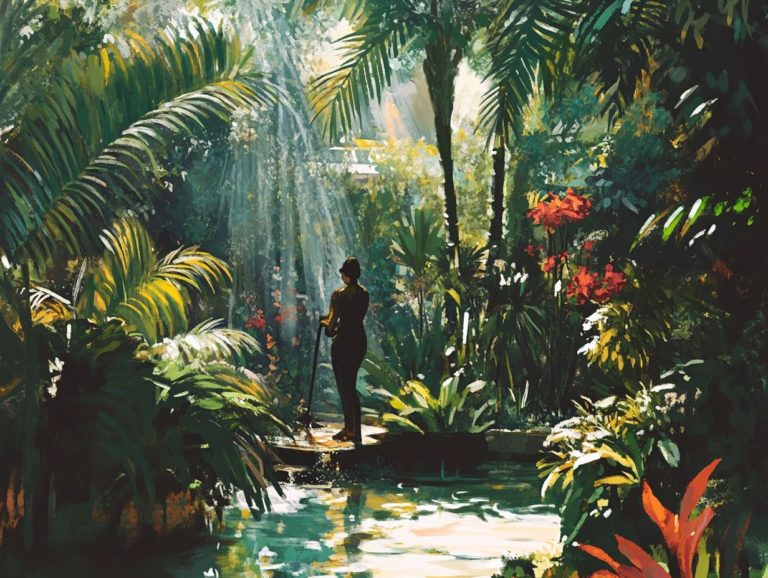How to Water Your Indoor Garden Correctly
Watering your indoor garden correctly is crucial for nurturing healthy, vibrant plants. It s essential to consider the unique water needs of your indoor plants to ensure they thrive in your environment. Proper watering techniques help you avoid issues like overwatering (giving too much water) and underwatering (not enough water). They also promote optimal growth by meeting each plant’s unique water needs.
This article delves into the benefits of employing proper watering techniques, such as bottom watering and top watering. From enhancing growth to sidestepping common pitfalls, understanding your plants unique needs including soil moisture, pot size, and environmental factors is key.
You’ll discover effective watering methods, how to avoid the dreaded overwatering and underwatering, and troubleshooting tips to tackle any issues that may arise, ensuring optimal plant health. For more detailed guidance, check out watering frequency: what your indoor plants want. Dive in for valuable insights that will keep your indoor garden flourishing, with expert gardening tips and plant care advice!
Contents
Key Takeaways:
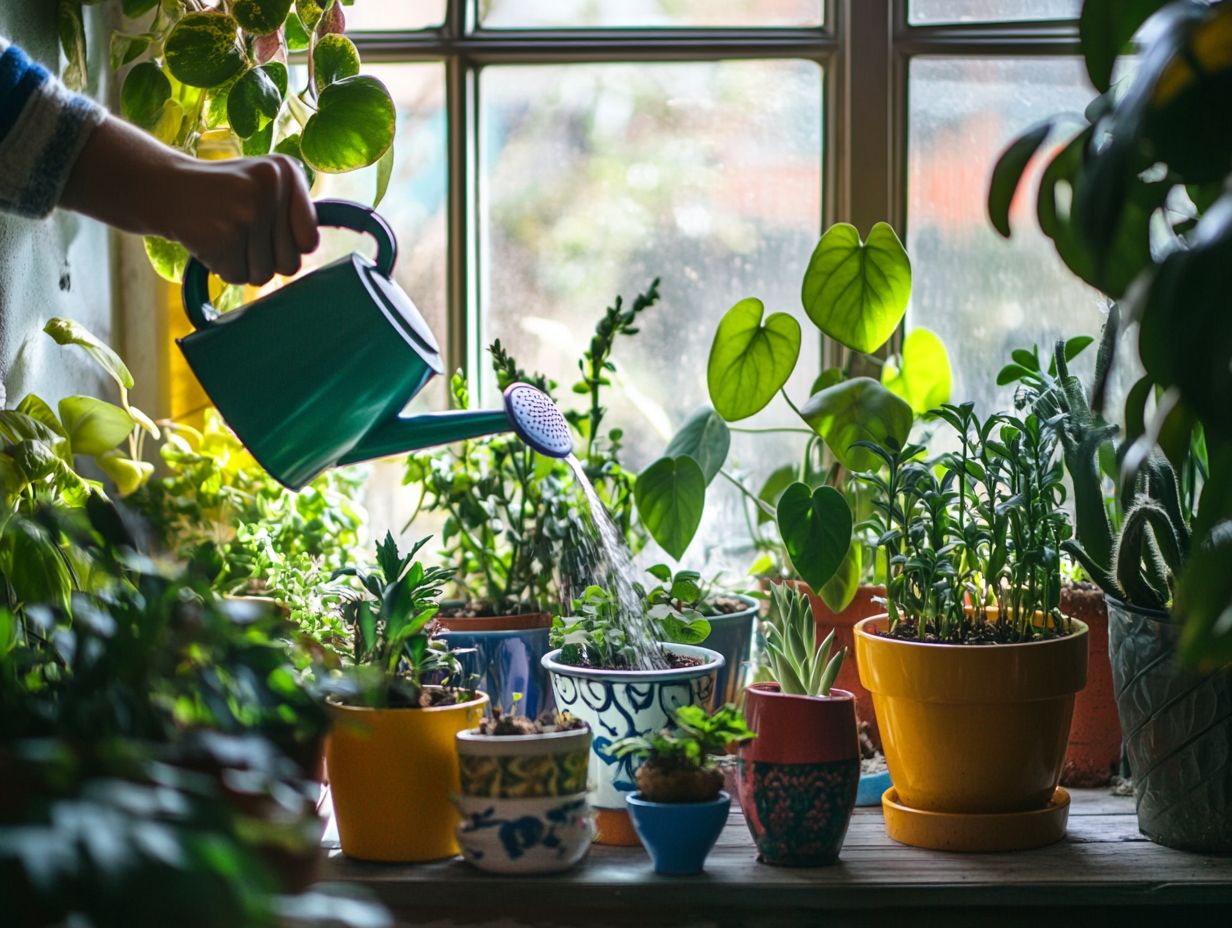
- Proper watering leads to improved plant growth and health, making your indoor garden thrive, while also preventing common plant diseases like root rot.
- Consider your plants’ specific needs, including tropical plants and succulents, along with environmental factors before watering to avoid over or underwatering.
- Choose the right watering method, frequency, and amount of water for your plants, including using filtered water or rainwater, to keep them happy and healthy.
Benefits of Watering Your Indoor Garden Correctly
Watering your indoor garden correctly is essential for the overall health and vitality of your houseplants. By mastering proper watering techniques, you avoid common pitfalls and promote optimal growth.
Establishing the right watering schedule and methods enhances your plants’ resilience, allowing them to adapt gracefully to varying moisture levels and light exposures. Finding the right balance is the secret to thriving plants!
Improved Plant Growth and Health
Correct watering plays a key part in enhancing plant growth and overall health, ensuring your houseplants develop robust roots and lush foliage.
By maintaining the right moisture levels in the soil, you create an optimal environment that nourishes the roots while promoting vibrant green growth above ground. Implementing effective watering strategies for large indoor plants can help prevent issues; overwatering can lead to root rot and other plant diseases, while underwatering may result in stress and wilting leaves.
By observing these watering habits, you enable better nutrient absorption, which supports the plant’s immune system and boosts resilience against pests. Thus, mastering proper watering techniques is essential for cultivating a thriving indoor garden that beautifully showcases the diversity of plant life.
Factors to Consider Before Watering
Before you water your indoor plants, it s essential to consider several factors that influence their unique water requirements. Understanding specifics such as the type of soil, pot size, and moisture levels is crucial for developing a successful watering strategy.
Environmental elements like temperature, humidity, and light exposure impact when and how much to water your houseplants, whether they re tropical beauties or resilient succulents.
Understanding Your Plants’ Needs
Understanding the needs of your indoor plants is essential for effective watering and overall care. Different houseplants come with their own unique water requirements and adaptations.
For instance, tropical plants flourish in humidity-rich environments and typically prefer consistently moist soil. In contrast, cacti and succulents are masters of survival in arid conditions and require less frequent watering. To enhance your care routine, consider optimizing watering for indoor vegetables, recognizing the unique characteristics of each type allows you to tailor your care routine with precision.
Keep an eye out for signs like yellowing leaves or a draping posture, which often indicate overwatering especially for succulents that store moisture in their leaves. If your tropical plants appear parched, it s a clear signal that they re desperately in need of hydration.
Get to know your plants needs! Crafting the perfect watering schedule will keep them thriving!
Environmental Factors
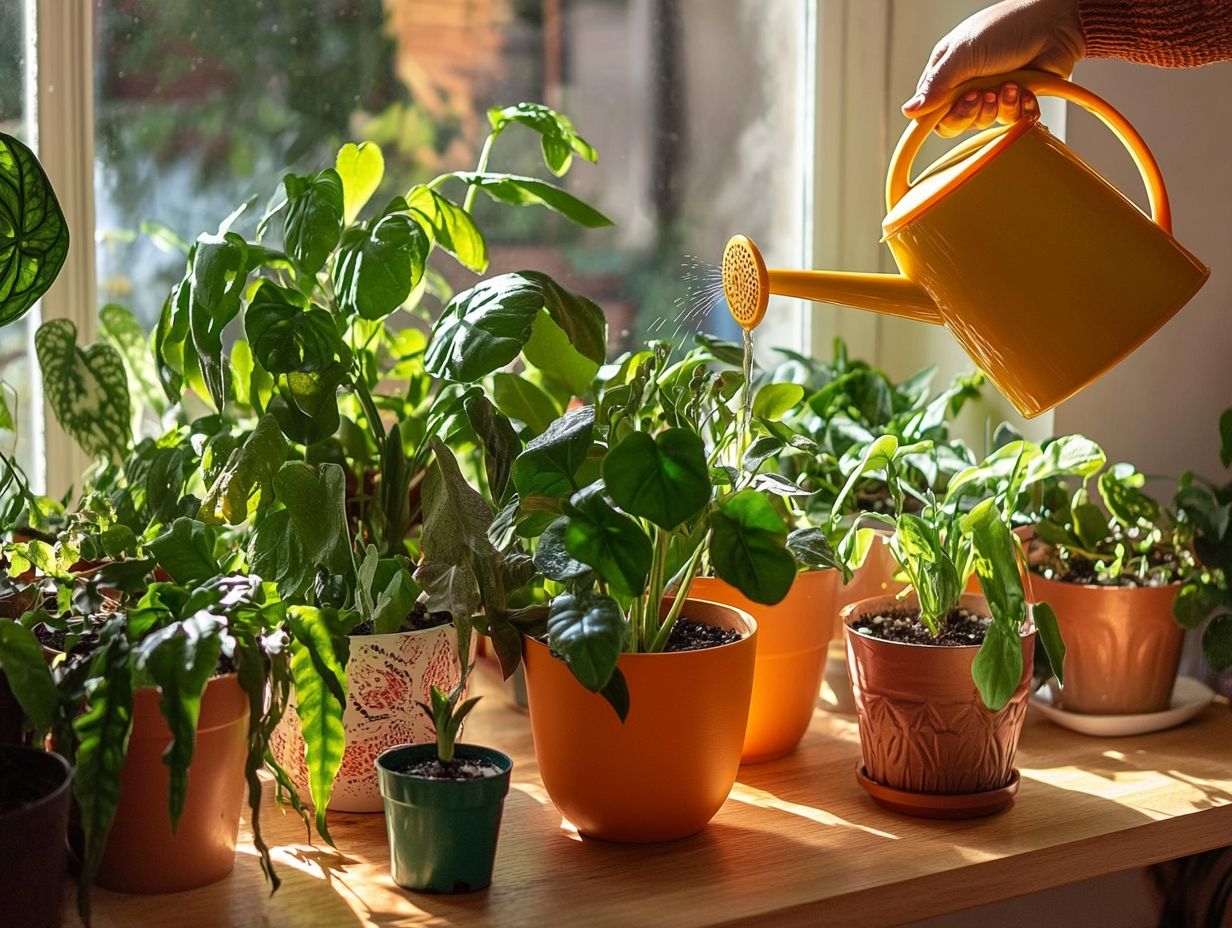
Environmental factors like light exposure, room temperature, and humidity play an important role in shaping the watering needs of your indoor plants.
These elements are key in determining how quickly the soil dries out. As a result, you should adjust how often you water, especially considering your local climate and seasonal changes.
For instance, during the warmer months when natural light floods in, your plants might crave more frequent hydration to stave off wilting. On the flip side, in the cooler, darker months, their thirst tends to diminish.
It’s also essential to consider the humidity levels in your home. Plants in dry environments, especially those heated during winter, may require some extra moisture. By adjusting your watering techniques for different indoor species to align with these variables, you ensure that your plants receive the hydration they need, fostering healthier growth and vibrant foliage.
Proper Techniques for Watering
Employing the right techniques for watering your indoor plants is essential for fostering healthy growth and avoiding issues like root rot that can arise from improper practices.
Techniques such as bottom watering and top watering, paired with a consistent watering schedule, help you maintain optimal moisture levels and nurture strong, healthy roots.
Utilizing tools like moisture meters and precision watering cans can elevate your watering approach, ensuring that your houseplants receive the precise amount of water they need according to their unique requirements.
Choosing the Right Watering Method
Choosing the right watering method is essential for keeping your houseplants healthy, as different techniques can have a significant impact on soil moisture levels and plant vitality.
For example, bottom watering where plants absorb moisture through their drainage holes is a game-changer for your plants! This method not only encourages the development of stronger root systems by prompting roots to grow downward but also helps prevent overwatering, which can lead to root rot. To learn more about this method, check out what is the best way to water indoor plants? This condition occurs when roots decay due to too much water.
Conversely, top watering offers a more straightforward approach, saturating the soil surface directly before allowing excess water to drain away, ensuring optimal soil moisture. By understanding the specific needs of your various houseplants, you can customize your watering strategy, including knowing the best time of day to water indoor plants, ensuring optimal moisture retention and promoting overall health.
Frequency and Amount of Water
Determining how often and how much water your indoor plants need is essential for effective care and preventing issues like wilting or yellowing leaves.
You can accomplish this by taking several factors into account, including the specific type of plant, its size, and the environmental conditions within your home.
For instance, succulents and cacti thrive on less water compared to their leafy tropical counterparts, while larger plants often require a more consistent watering routine.
Sunlight, humidity, and temperature all significantly influence how quickly the soil dries out, leading to common mistakes like overwatering or underwatering. By understanding the science of watering indoor plants and establishing a watering schedule tailored to these variables, you’ll not only ensure healthier plants but also steer clear of pitfalls that could result in irreversible damage.
Common Mistakes to Avoid
Avoiding common mistakes like overwatering and underwatering is the secret to thriving plants! By mastering this delicate balance, you’ll create an environment where your plants can flourish, showcasing their vibrant beauty and vitality.
Overwatering and Underwatering
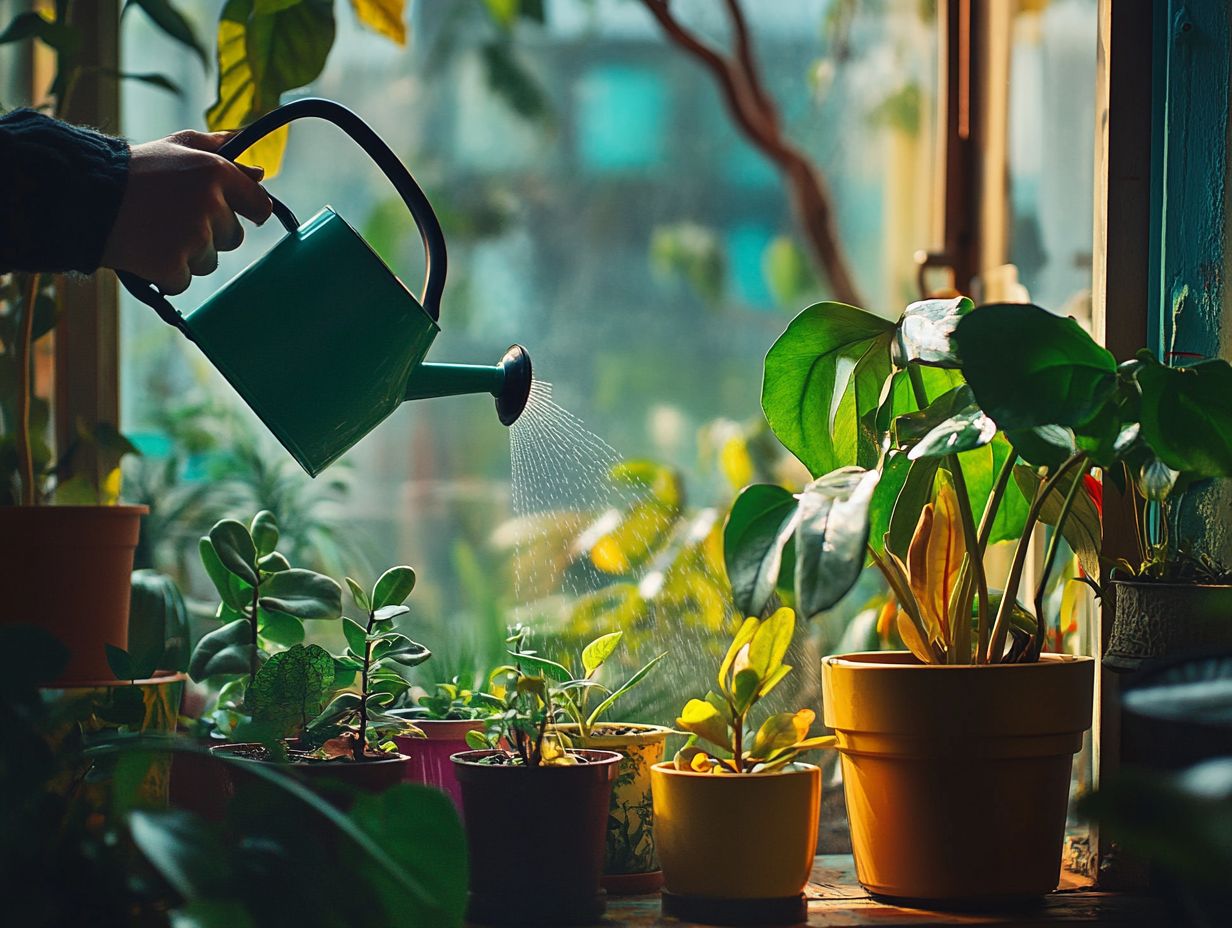
Overwatering and underwatering can harm your indoor plants. They may lead to root rot and other issues if proper drainage and watering methods are not used.
It’s essential for you to recognize the telltale signs. When plants are overwatered, they often showcase yellowing leaves, a mushy stem, and a sour odor wafting from the soil. These are all indications of a critical oxygen deficiency at the roots. If your plant is thirsty, you might notice wilting, browning leaf tips, or soil that appears overly dry and cracked.
To remedy these issues, adjusting your watering habits is crucial. Ensuring that pots have proper drainage or scheduling regular moisture checks can truly transform the health of your plants. By considering the specific needs of each plant type and implementing the best watering techniques for indoor plants, you can effectively mitigate these problems and foster a thriving indoor garden.
Signs of Overwatering and Underwatering
Recognizing the signs of overwatering and underwatering, such as drooping leaves and changes in soil texture, is essential for maintaining the health of your plants. By being attuned to these indicators, you can pinpoint issues before they develop into more significant problems.
Identifying and Addressing Issues
Identifying and addressing watering issues is essential for maintaining the vitality of your indoor plants. Recognizing the signs of overwatering or underwatering can greatly enhance your plant care routine.
Keep an eye out for drooping leaves, yellowing foliage, or soil that feels excessively dry or soggy. These telltale signs provide crucial insights into your watering habits.
A practical technique is to check the soil’s moisture level by inserting a finger about an inch deep. This straightforward method can help you establish a more balanced watering schedule.
Consider using pots with holes or adding perlite to your soil mix. This lightweight material helps improve soil drainage. These steps can prevent future issues and foster healthier growth for your leafy companions.
Troubleshooting Tips
Troubleshooting common watering problems is crucial for anyone like you who aims to cultivate a flourishing indoor garden and safeguard the health of their houseplants. By addressing these issues promptly, you can ensure that your plants thrive rather than face the risk of decline.
How to Solve Common Watering Issues
Dealing with common watering problems requires a proactive strategy to ensure your plants thrive and remain free from diseases. Identifying the signs of overwatering or underwatering is essential for maintaining optimal plant health.
You might notice symptoms like yellowing leaves or wilting, which can indicate different issues. If you find soggy soil or detect a foul odor, it’s often a clear indicator of overwatering, which can lead to root rot. Conversely, if the leaves appear dry and brittle, it could be a sign that your plants are underwatered. To help address these issues, consider these tips for keeping indoor plants thriving.
To tackle these challenges effectively, adjust your watering schedule according to seasonal changes and regularly check soil moisture. Incorporating self-watering systems or ensuring proper drainage will help you prevent these common watering dilemmas.
Frequently Asked Questions
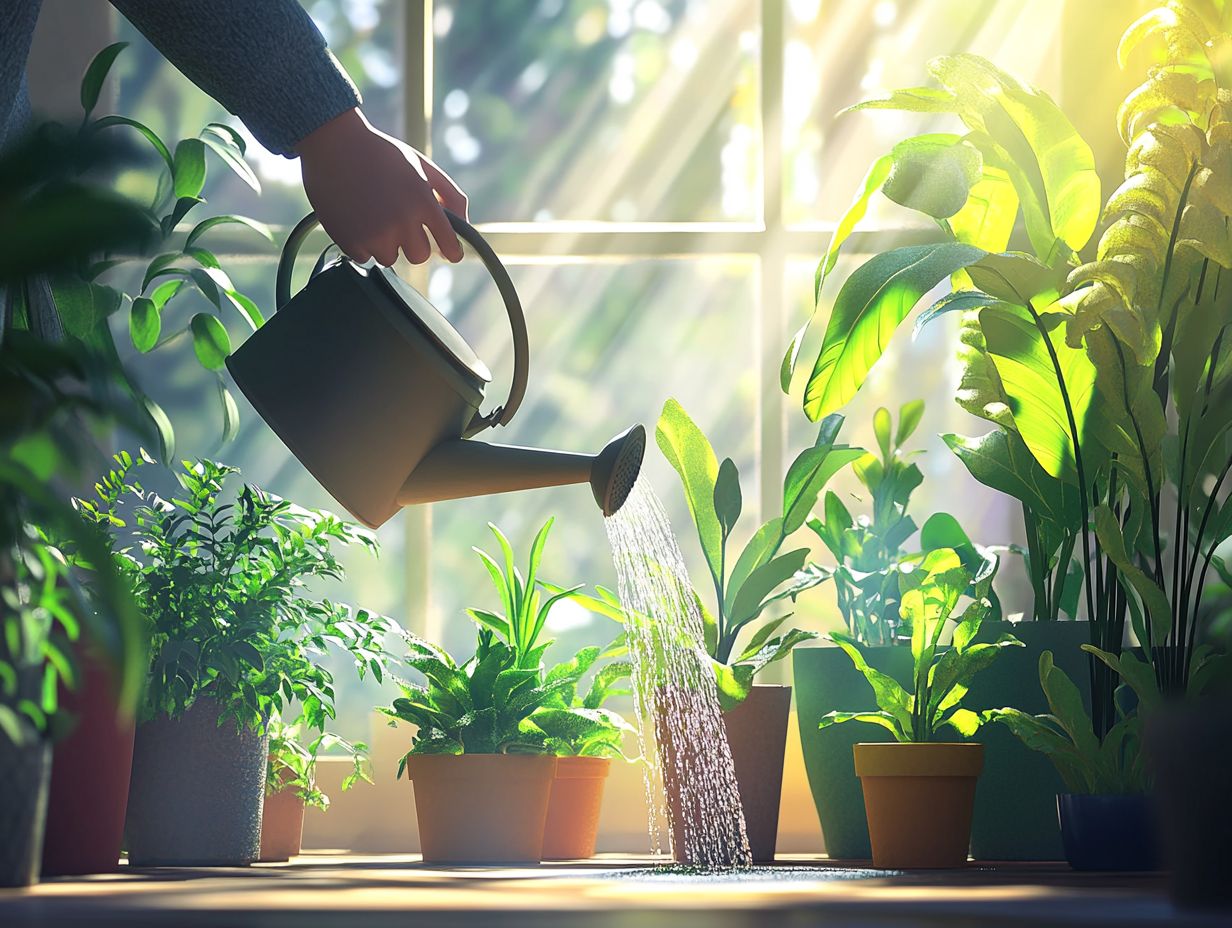
1. Wondering how often to water your indoor garden?
The frequency of watering your indoor garden will depend on factors such as the type of plants, size of pots, and the environment. Generally, most indoor plants need to be watered once a week. However, it s best to check the soil moisture before watering.
2. Curious how to tell when it’s time to water?
To determine if your plants need watering, check the top inch of soil. If it feels dry, then it’s time to water. You can also use a moisture meter or stick your finger into the soil to gauge the moisture level.
Act now to prevent these issues and keep your plants thriving!
3. Is it better to water my indoor garden in the morning or evening?
The best time to water your indoor garden is in the morning. This allows the water to soak into the soil and be absorbed by the plants throughout the day.
Watering in the evening can lead to excess moisture. This promotes the growth of bacteria and fungi.
4. How should I water my indoor garden?
Water your indoor garden by targeting the soil directly. Avoid pouring water on the leaves.
Use a watering can or pitcher to pour water slowly onto the soil. Keep watering until you see it draining out of the bottom of the pot to hydrate the entire root system.
5. Can I use tap water for my indoor garden?
You can use tap water for your indoor garden. However, letting it sit for 24 hours before using it is best.
This allows chlorine and other chemicals to evaporate, making it safer for your plants. Alternatively, consider using filtered or distilled water.
6. What happens if I overwater my indoor garden?
Overwatering can lead to root rot, which is harmful to your plants. It s essential to check the soil moisture and only water when necessary.
If you accidentally overwater, allow the soil to dry out before watering again. Consider repotting the plant if the roots are damaged.

